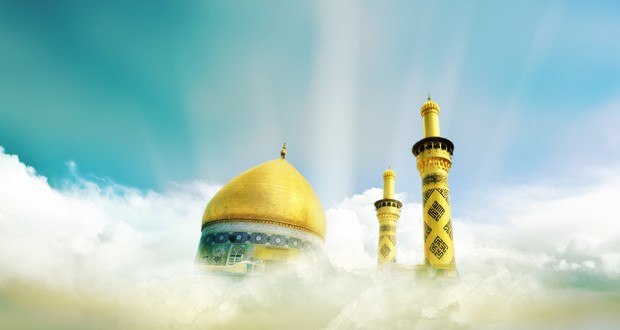Nouri Sardar
11th September 2018
The Beginning
The origins of the name Karbala are contested. Some narrations mention that the Prophet Muhammad (pbuh) himself during his lifetime mentioned the definition, implying that the word was a combination of Karb (land that causes agonies) and Balaa’ (afflictions) (1). In its etymology, Karbala most likely originates from Kar Bel, or Kur Babel, meaning a group of Babylonian villages, that included Nainawa, Al-Nawawees, Al-Ha’ir (also known as Al-Hira), among others. Other opinions mention that the name originated from qarballatu, an Akkadian word, referring to a sharp headgear and thereafter changing to Karbala in Aramaic, or from the word karbalaa’, meaning the imprint of a foot on soft ground. It is said by some (in what may perhaps be folklore) that the land once included an ancient temple (or graveyard) for Christians and was famous in pre-Islamic times, as part of the cities of the historic Tusuh An-Nahrain, situated on the shore of the old Euphrates river. Some also suggest the word comes from Karb/Ail (sacred precinct of Allah), or Kaar/Bolo (the higher work). Karbala may also be derived from Al-Kirbah, meaning softness, referring to the softness of the land. At the time of the battle of Karbala, the land was uninhabited, though it was rich with water and had fertile soil.
Three days after the battle of Karbala and he had been killed, Imam Hussain (pbuh) was buried by his son on the 1st (or 13th) October, 680 AD. His infant was placed on his chest and his elder son at his feet. Bani Asad, a tribe who lived on the outskirts, assisted with burying the martyrs, and a tree was planted to indicate the grave of Imam Hussain. Until today, its old location is indicated by a door to the shrine called ‘Baab Al-Sidrah’ (gate of the tree). The grave was visited by both travellers and local tribes, many of whom either stayed behind or asked relatives to bury them there after death, essentially beginning what would become the city of Karbala.
Mukhtar Al-Thaqafi, a Kufa-based revolutionary who led a rebellion against the Umayyads in vengeance for the death of Imam Hussain, visited the grave on the 18th August, 684, and built a mosque around the grave with a dome. It had two entrances.
Over half a century later, in 749, during the reign of Al-Saffah, a roof was built over a part of the mosque and a further two entrances were added. It was around this time that the Imams of the Shia school of thought, particularly Imam Jafar Al-Sadiq, began heavily institutionalising pilgrimages (or visitations, ziyarat) to Karbala and the grave of Imam Hussain. They did this by exalting the position of the land in Islamic thought, speaking of the blessings and healing qualities of its soil and highlighting the divine rewards pilgrims would receive by visiting. Many of these narrations are the biggest drive for pilgrims who travel from around the world to visit Karbala today. One example of such a hadith attributed to the Imams is,
“Do not avoid visiting the grave of Imam Hussain even during the days of prohibition. And one who visits him (his grave) in fear (of the enemies), Allah will give him refuge from the great fear of Qiyamah and he will gain reward proportionate to the fear. And the one who fears due to their fear, Allah will bestow him a refuge under the shade of His empyrean while he shall remain along with Imam Hussain and shall be protected from the fear of the day of Qiyamah.” (2)
While the shrine has benefitted from much construction, it has sadly suffered demolitions too. Its roof was demolished during the reign of Al-Mansur in 763. Around 787, the Abbasid Caliph Harun Al-Rashid demolished the roof and dome of the shrine, and cut down the tree that indicated Imam’s grave.
It was reconstructed in 808 but demolished completely by the Caliph of the time, Al-Mutawakkil on the 15th July, 850. He was particularly harsh on the shrine of Hussain and on its pilgrims. Aside from banning visitations, he also ordered the land to be plowed and demolished the shrine a total of four times during his reign. Some stories narrate that visitors would need to seek the scent of the grave to find it thereafter.
Al-Muntasir built a roof over the grave in 861 and set up an iron pillar near it, to serve as a landmark for the pilgrims. In 893, a dome was built in the center, with two rooves and an enclosure with two entrances.
In 981 approx, Aadod Al-Dawla, a Buyid ruler, built a dome and constructed a screen of wood around the grave (today known as the dharih). He became the first to lay the foundations for large scale construction, and built houses and markets, also surrounding Karbala with a high boundary wall. Schools and hotels also began to be built in the city. Burial in Karbala had become particularly popular the century earlier, and therefore cemeteries were also on the rise.
The shrines were damaged by a horrendous fire in 1016 after two large candles fell on the dharih (or on separate wooden decorations). These were rebuilt first by Al-Hasan ibn Al-Fadi, and then again by Nasir le-din-Illah in 1223. The dome was remodelled by Sultan Owais in 1365, who also extended the courtyard. Two minarets covered in gold were raised by Ahmad ibn Owais in 1384, like the minarets we see today. Ibn Battuta, the Moroccan scholar and traveller, visited Karbala in 1326.

